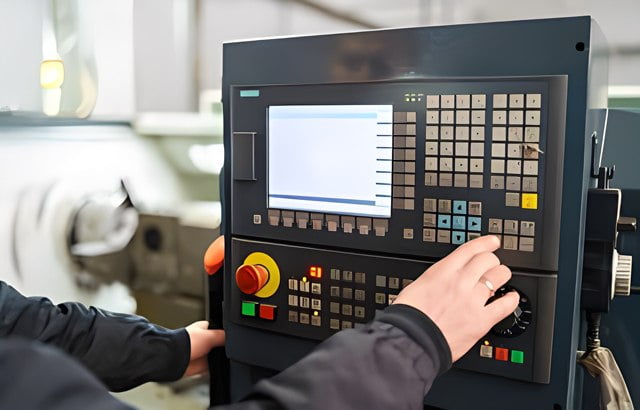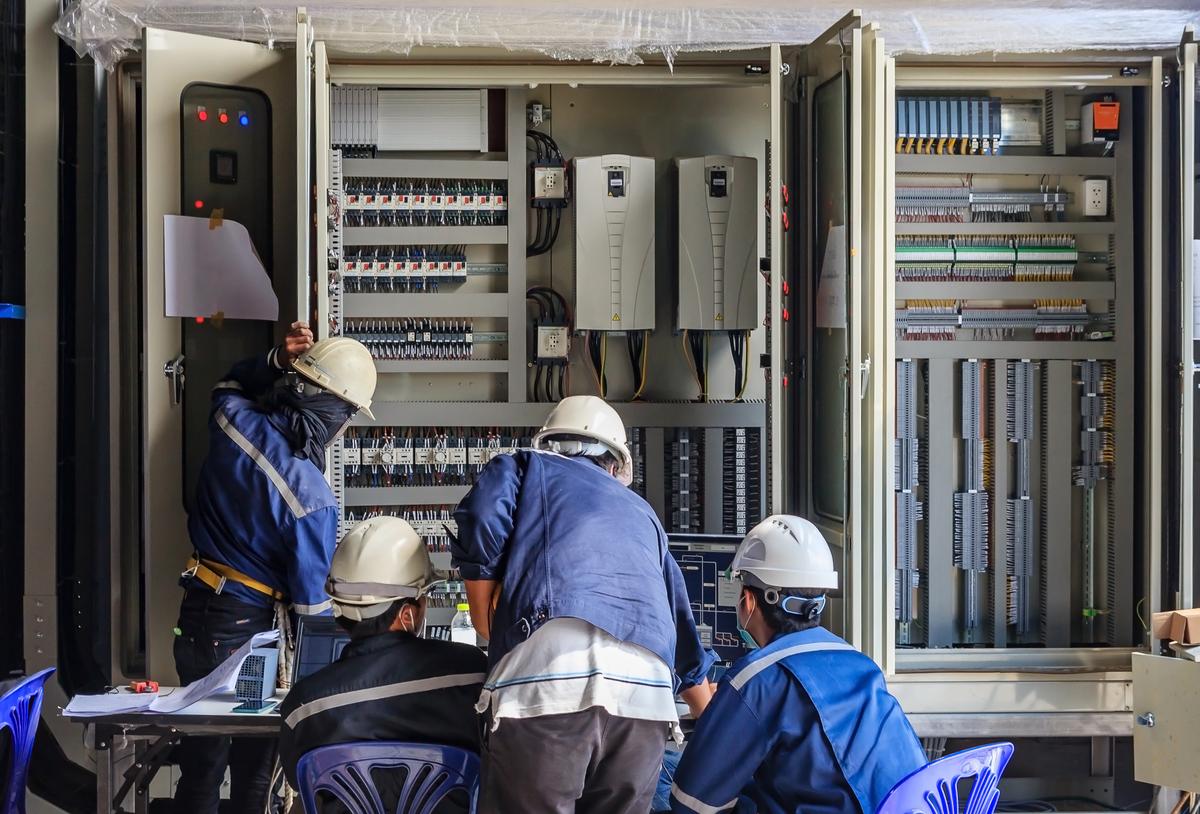Safety Standards and Compliance in Control Panel Design
Safety Standards and Compliance in Control Panel Design is very important for modern day industrial processes. Automation control panel safety rules protect people and machines in different industries. Following these standards lowers the risk of failures, malfunctions, and accidents with serious consequences.
Industrial manufacturing and production have embraced the advent of automation with open arms. Optimizing industrial processes with automation control panels has been a game-changer, providing unprecedented efficiency and output. The industry faces new challenges in updating safety standards for automated machinery and processes because of progress. Recognizing these challenges emerges as a prerequisite for progress, prompting an urgent need for constant adaptability and evolution in safety regulation and adherence.
Industrial automation control panels contain electrical devices and control devices. Because of the different types of components, several standards and regulations apply to ICP design, production, and installation. The automation control panel must comply with these standards to ensure safety and performance.

Best Practices for Industrial Control Panels Safety Standards
Regarding ensuring the proper design of industrial control panels and adhering to best practices, several key guidelines are crucial to follow. These practices help ensure the safe and efficient operation of control panels, which are vital in various applications and industries.
General Practices:
- Ensure the control panel has adequate space to accommodate all devices and leave enough gaps between them when necessary. Proper spacing between components enhances heat dissipation and facilitates future additions.
- Size wire trays and ducts appropriately, considering the amount and size of the cables that must pass through them.
- It’s important to label both devices and wires within the panel. Quick identification and wire tracing are highly valuable for troubleshooting and maintenance.
Electrical Practices:
- Proper electrical grounding is essential. Adhere to grounding rules outlined in standards and apply high safety factors when possible. Incorrect grounding is a major cause of control device failures.
- Where feasible, include auxiliary circuit breakers and fuses. It’s preferred to split power branches within the control panel if space allows it.
- Use shielded cable to reduce electromagnetic interference.
- Keep sensitive devices and wires separate from high-power elements to prevent electromagnetic noise from affecting signal transmission.
- Install labels and warnings as mandated by the standards, and consider additional warnings for residual risks.
Wiring Practices:
- Design control panels using CAD tools that optimize wiring routes, which can lead to material and time savings.
- Run wires vertically or horizontally, avoiding diagonal runs and wires in front of devices.
- Whenever possible, use stranded wire, which dissipates heat better and is more flexible than solid wire.
- Leave sufficient wire slack for future adjustments, and ensure that wire slack is neatly concealed under the main wireway, avoiding routes near devices.
These best practices are essential for designing control panels that not only meet safety and regulatory standards but also contribute to efficient operations across various applications and industries.
Understanding safety standards
Automation control panels are the cornerstone of modern industrial operations, serving as the central nervous system for critical processes. These control panels have evolved beyond mere hardware configurations, now relying heavily on advanced software and technology. To ensure the safety of personnel, assets, and the environment, companies must adhere to stringent safety regulations that govern the proper functioning of these systems.
The design of automation control panels necessitates a keen focus on safety and rigorous regulatory compliance. Industry-specific regulations are pivotal in shaping these compliance requirements, directly impacting safety within industrial environments.
These safety regulations encompass a wide spectrum, ranging from exacting standards for industrial control panel wiring to meticulous guidelines for machine operation and maintenance schedules. The ultimate aim of these regulations is to engineer a final product that operates consistently and securely under all conditions, mitigating potential risks and hazards. However, it’s important to recognize that understanding and implementing these safety regulations is a comprehensive and meticulous process, demanding a high level of expertise.
It becomes evident that key factors such as automation control panel installation, testing and setup play pivotal roles in achieving these stringent safety standards and ensuring compliance. These factors are not only integral components but also critical stages in the meticulous process of automation control panel design and implementation.
Regulatory compliance requirements
In every industry, adhering to safety requirements is not just a matter of choice; it is a mandatory component tied to the operation’s legitimacy. With changing landscapes and technological advancements, these stipulations evolve, requiring firms to stay updated and compliant. Having a strong focus on these rules ensures the safety of employees and contributes to the overall productivity of the operation.
At the epicenter of many businesses lies a crucial component: the control panel. Regulators heavily enforce control panel safety due to its importance in protecting workers from potential hazards. Failing to follow these safety standards can lead to significant penalties, including fines and an operational shutdown.
To achieve safety compliance, everyone in the organization, from top executives to frontline workers, must understand the rules and follow them. Each employee has an important role in maintaining a culture of safety compliance.
Common Safety Challenges
In industrial settings, safety is of utmost importance. Companies in various sectors, such as construction, manufacturing, and energy, face numerous daily safety challenges. Achieving safety in these environments is not merely a checklist item; it requires continuous and vigilant efforts in reviewing, implementing, and monitoring safety standards.
Risk assessment plays a crucial role in this process, serving as an essential tool to identify hazards and control measures. Its significance, however, does not reduce the safety challenges that industries face. These challenges often have roots in factors such as outdated equipment, human error, improper training, or unanticipated accidents. Overcoming these obstacles is central to ensuring that every worker operates within a safe and secure work environment, and industries must adopt comprehensive and proactive safety measures.
Importance of Risk Assessment
In any industry or field, comprehensive risk assessment is pivotal to maintaining safety and health standards. Primarily, it aids in identifying potential hazards in the work environment before they can culminate into significant risks.
Companies use safety regulations to formulate strategies and enforce safety guidelines, creating a safer work environment. For instance, in a manufacturing facility with complex machinery, strict implementation of control panel safety measures identified during risk assessment reduces the risk of accidents and equipment failures, improving worker safety and equipment durability.
Risk assessment also promotes proactive adherence to safety standards rather than a reactionary stance. Detection and rectification at the nascent stage become easier and more cost-effective than post-damage recovery. The rope between safety regulations and risk assessment forms the cornerstone of occupational safety. Precisely predicting and preventing threats makes adhering to safety guidelines organic rather than enforced, which not only safeguards employees but transforms the workspace into an environment fostering growth, optimism, and productivity.
Case Studies
A daunting incident demonstrating the importance of safety in manufacturing occurred at a steel factory in Michigan in 2019. Due to insufficient adherence to control panel safety standards, a catastrophic system failure triggered an immense blast, injuring several workers and halting production for weeks. The comprehensive investigation following the accident underscored the criticality of stringently observing established protocols and rules for equipment safety.
In another case study on safety compliance, a top electronics company in Silicon Valley gained recognition for its diligent adherence to control panel design regulations. They integrated cutting-edge safety features, significantly reducing the risk of workplace accidents and boosting productivity. Independent safety inspectors audited and verified the company’s exceptional safety standards, establishing them as an industry benchmark.
Innovations in safety
Advancements in technology have spurred the development of innovative solutions to address the ever-evolving landscape of safety standards and requirements. Notably, adding data analytics and machine learning tools to safety assessment processes makes the picture of possible risks bigger and more complete. This efficient use of technology significantly improves the accuracy of identifying safety needs and issues, minimizing human error, and reducing biased or subjective interpretations.
Over recent years, many industries have streamlined safety protocols and mitigated risks associated with their operations using automated safety systems. These automated processes ensure consistency and reliability in maintaining safety standards, enhancing the credibility of safety certifications. Critical to the operational integrity of many industries, these certifications validate the effective implementation of necessary safety measures. By leveraging these cutting-edge technologies, companies are significantly bolstering their safety strategies, further protecting their staff and stakeholders.
Training and education
Investing in human capital through educational initiatives and advanced training programs has become an indispensable strategy for lowering incidences of workplace hazards and improving compliance with safety standards.
These programs often involve profound engagement with safety audits, a systematic method for identifying potential shortcomings and areas for improvement in a business’s or organization’s safety protocols. Safety audits not only provide a detailed analysis of the existing safety norms but also highlight the areas that require special attention to ensure a safer and healthier workspace.
Many training programs take a practical approach by using case studies to teach safety compliance. These real-life examples offer a clear view of common safety challenges and effective solutions, making abstract concepts more understandable and leading to stronger workplace safety measures.
Safety, like control panel design, is an evolving field with significant technological advancements. Therefore, comprehensive training and education should include these new techniques to empower workers with the skills for safe and efficient operations.
The development and implementation of safety standards in operations is not a destination but a continuous journey. It demands the dedication of all stakeholders, from the most junior employees to executives. Organizations increasingly recognize that an effective safety standard process is ongoing and evolving rather than a static system. It is about welding together the human element and technology in a symbiosis that fosters a culture of safety.




